Bow ties are a quintessential addition to any classic menswear wardrobe. Of course, whether you consider yourself a true menswear aficionado like us or not, a bow tie probably isn’t a totally new item to you. But, just in case you’re uninitiated, we’ll discuss it comprehensively today.
Much like its sibling, the long necktie, a bow tie is a piece of fabric that’s tied around the collar of a shirt. But, unlike the long necktie, the bow tie features a central knot with the decorative elements of the fabric at either end horizontally.
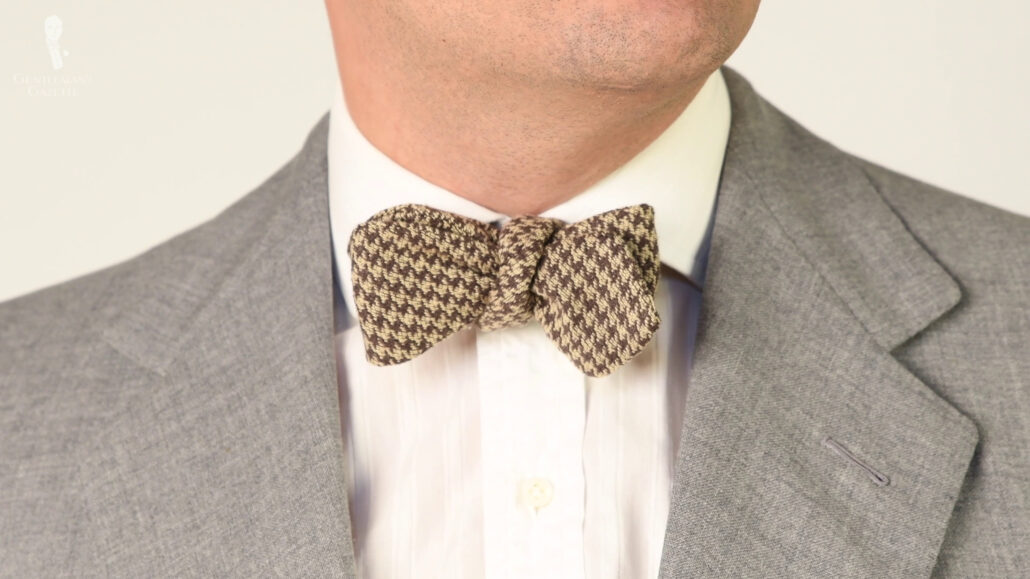
On a linguistic note, unlike the spelling of “necktie,” which is usually rendered as one word, “bow tie” is usually two words. This is because the phrase originally referred not to the name of the item itself, but rather, simply the method by which it was tied.
Early History of the Bow Tie
To understand more about this, let’s step back in time and take a look at the history of the bow tie. And, although it’s a topic we’ve discussed before on the channel, we can’t take a look at the history of bow ties without talking about the history of neckties in general.
Neckties are the descendants of these strips of cloth worn around the necks of Croatian soldiers enlisted by the French in the 1660s. These were originally referred to as “croats” to refer to the soldiers themselves, but later became “la cravat” in French and then “cravat” or “kruh-VAT” in English.
Speaking of which, it was the sartorially savvy Charles II of England who brought the cravat from France to England. Charles’s impact on the world of menswear was large as he was also the king who decreed that men should wear waistcoats.
So, as the general populace adopted neckwear into their everyday dress, the cravat took on many different forms, which were often distinguished by how it was tied around the neck as can be seen in this fantastic Neckclothitania pamphlet from 1818. But, much earlier than this pamphlet, around the 1680s, in fact, another distinct style of cravat tying was becoming popular; that which would eventually evolve into the bow tie.
As is outlined in this excerpt from his 1688 book, The Academy of Armoire by author Randle Holme III, “a cravat is another kind of adornment for the neck being nothing else but a long towel put about the collar, and so tied before with a bow knot.”
Menswear historians point to the 1810s as around the time when the cravat came to be commonly called a “tie,” and it was commonly thought that a man’s character could be determined from the way he tied it.
Of course, this is something that the father of the modern dandy, Beau Brummell, understood very well as he would supposedly spend hours in front of his mirror, perfecting the knot of his cravat to look like he had just thrown it on. This is, of course, the essence of sprezzatura.
Regency Era
It was around Brummell’s time, in the Regency Era, when we can see the bow tie taking shape in a form that we could almost recognize today. The big difference here is that cravats were long pieces of fabric that were typically wrapped around the neck two or three times before being tied. This would help the tall collars of the 1800s stand up more proudly.
As the decades progressed, though, collars became stiffer and thus, more uncomfortable to wear with multiple layers of fabric around them. Also, styles matured from the brighter and more colorful fashions of the early 1800s to the more somber and subdued looks of the late 1800s.
With the introduction of the turn-down collar in the 1860s, we can see a smaller bow tie come into fashion, and this waxing and waning of bow tie sizes would continue through the decades and centuries. However, we’re not discussing the bow ties of the 70s. At least, not yet.
Mid-Victorian Era
In the mid-Victorian period, it was decided that a pearly white bow tie in either silk, cotton, or a special weave called “pique” would be proper for the most formal of evening events. Meanwhile, a black bow tie was reserved for slightly less formal events of the evening, eventually becoming the standard for the dinner suit or tuxedo.
This then is why these two dress codes are commonly referred to as “White Tie” and “Black Tie.” And, by the way, for comprehensive information on these dress codes, as well as formal day wear, you can take a look at our Black Tie Guide on the website.
Speaking of daywear, we can see the spirit of the industrial revolution being applied around this time with the advent of the clip-on bow tie. You may have thought that these were a modern invention but, in fact, they’re actually centuries old.
History shows us that some clip-ons actually date all the way back to the very first cravats. Because they could be time-consuming to tie, the ability to simply clip on a pre-tied cravat would shave countless hours off of the morning routine. I suppose Beau Brummell just hadn’t heard of them.
Some of the earliest types were fastened with buckles at the back, where the other end would be threaded through and then secured. This, of course, is broadly similar to how some waistcoats or belts are buckled today.
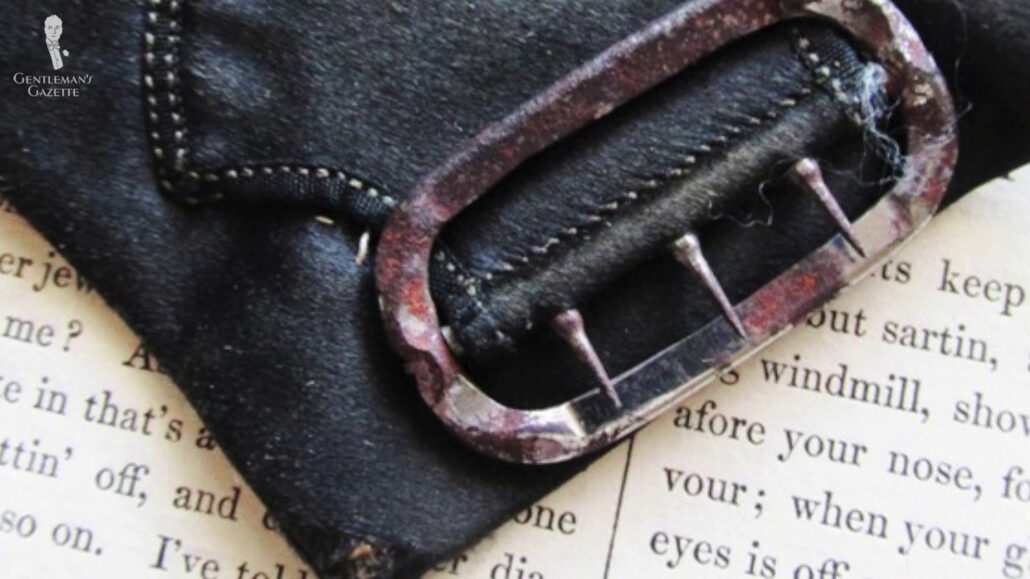
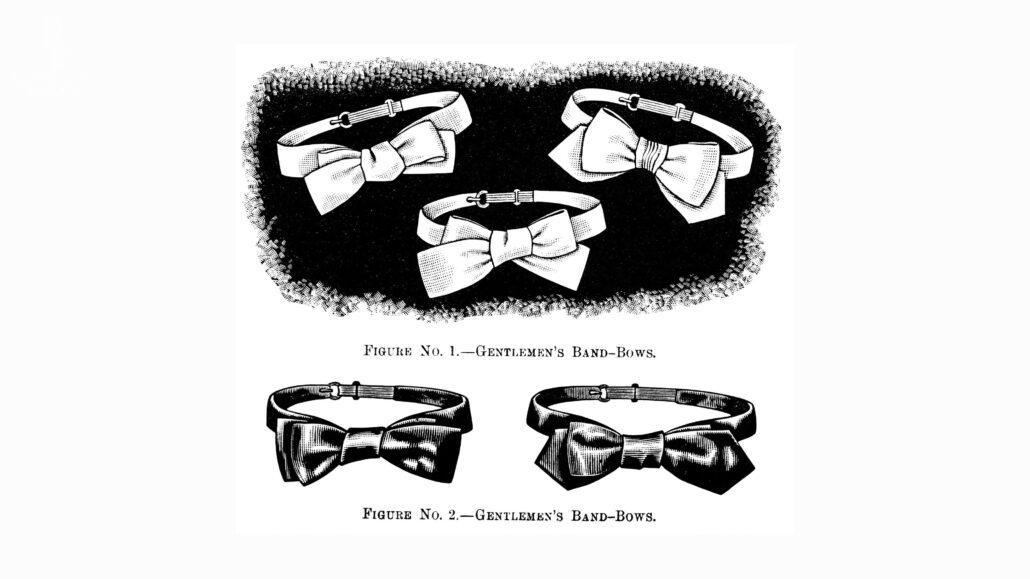
As you can see, these styles of buckles that essentially used sharp claws to pierce the fabric weren’t entirely health and safety friendly. So, in the late-Victorian Era, you could also see models with a hook-and-loop closure and early elastic.
Even though most collars of the time were still standing and thus, this fastening could potentially be seen, jacket collars of the time, on average, rose higher than they do today and thus, they would cover up this fastening at the back of the collar.
As turndown collars came to be popular, but those that were also stiff, it was difficult to get a tie fastened underneath these folded stiff layers of fabric. So, shield ties also called “teck ties” became popular.
Essentially, the pre-tied bows here would be sewn onto a banana-shaped shield that would sit between the leaves of the collar. The bow tie could then be attached to the collar stud by either elastic or metal clips. And if you’re unfamiliar with what a collar stud is, we won’t take time to discuss it today, but you can find out more information in our guide to Obscure Men’s Jewelry.
20th Century
The next major advance in clip-on bow tie technology came in the 1920s with the two-clip bow. With clips underneath each end of the pre-tied bow, this essentially functioned just like a collar clip as each end would clip directly onto the collar. These would later be marketed as “grip-ons” and they would become popular again in the 1950s and 60s.
By the mid-20th century, soft turndown collars were the norm and so, pre-tied bow ties that were fastened simply with elastic became popular. These are still around today too, but they’re mostly just seen in fancy dress costumes or, perhaps, bow ties for children.
Toward the end of the 20th century, another style of clip-on was developed and this is the one we still see most commonly today. The style features a full-neck band with a hidden hook that allows the wearer to adjust the neck size. Alternate fastening methods, such as buttons, could also be found in this style.
Many bow ties today, including both pre-tied and self-tie models, still use this hook system and, indeed, the inside of the bow tie is often printed with different neck sizes.
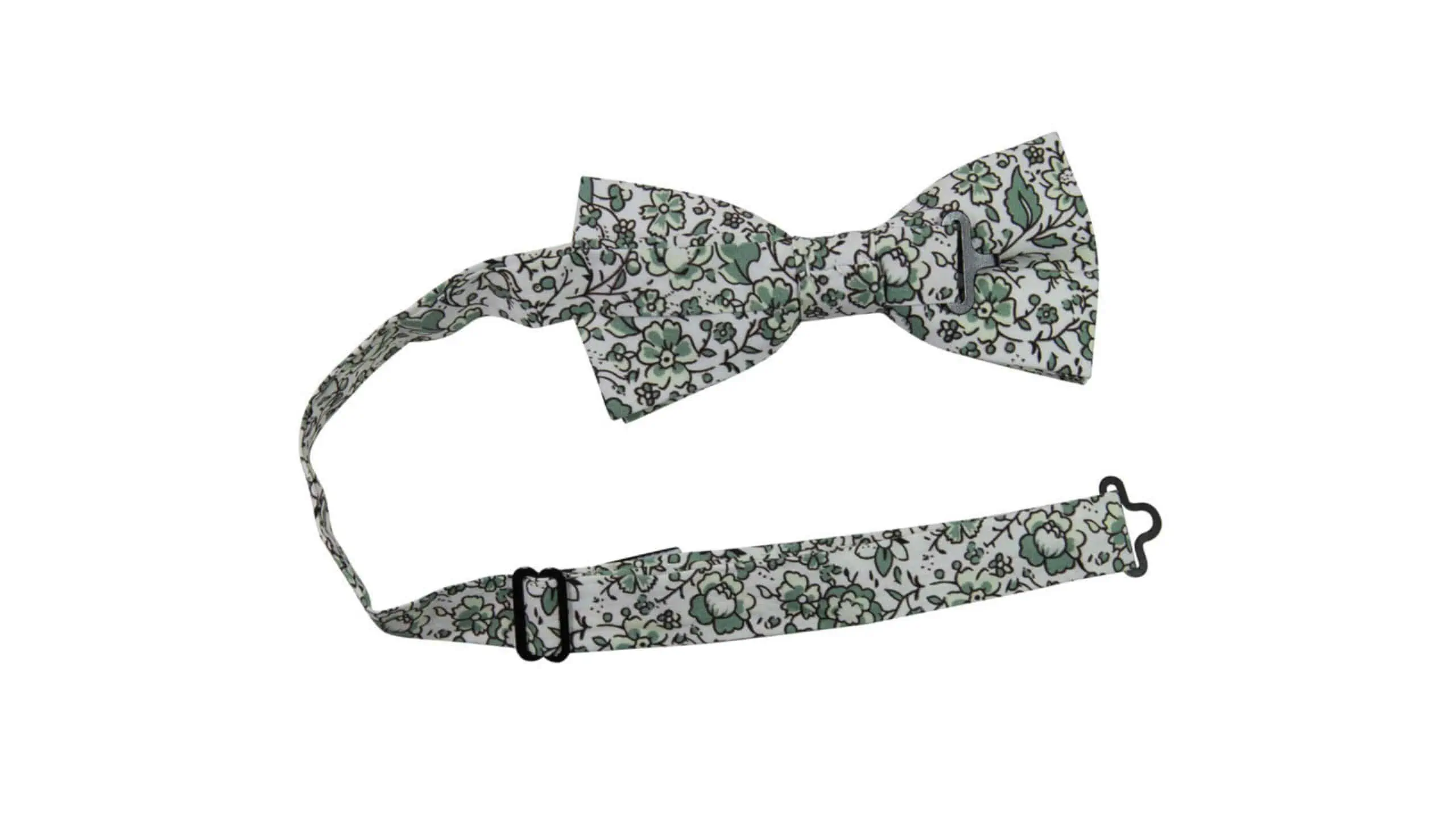
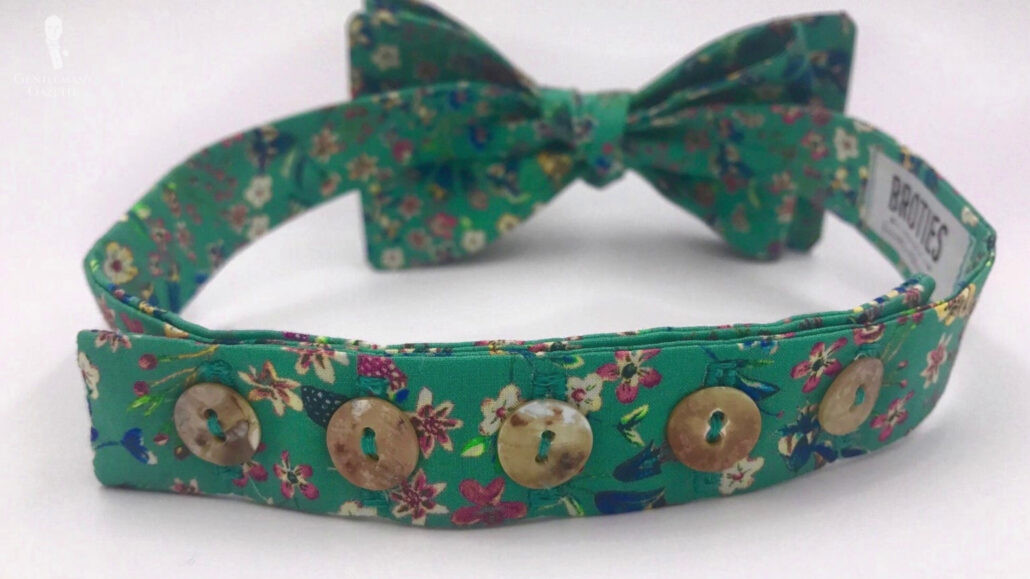
Of course, every manufacturer does things a bit differently, so just because you might have a size 15 neck, for instance, doesn’t mean that the size 15 on any given bow tie is always going to be exactly right. A little bit of experimentation might be necessary.
Manufacturers have stuck with this style because it saves them a good amount of time and money, in order to make a one-size-fits-all system for bow ties, rather than marketing several bow ties in various specific neck sizes. To be sure, this isn’t an issue when it comes to daywear bow ties as a turn-down collar will cover things up.
However with evening bow ties, where your collar is often going to be in a standing style, seeing this hook arrangement is unattractive and it ruins the clean and simple lines that one should have in formal wear.
Unfortunately, it’s become increasingly difficult to find proper evening bow ties that don’t feature side adjusters, or, at least, it was before we started marketing our own line of sized bow ties at Fort Belvedere. We offer several styles of black and white bow ties that will specifically correspond to your neck size in the Fort Belvedere shop.
Bow Tie Materials
When it comes to bow tie materials, we’ll emphasize modern bow ties, as they can often be made from pretty much anything. While you’ll be able to find bow ties today in materials from plastic to neon lights to wood to feathers, any of these should really just be considered novelty or extremely casual designs, rather than something that can be seamlessly incorporated into a classic wardrobe.
Furthermore, most readily available bow ties on the market today, especially clip-ons, are going to be made from synthetic fibers like nylon or polyester. These are going to look artificially shiny most of the time, though, and if they are clip-on styles, their perfect symmetry will look a bit sterile and won’t lend a good look to your overall outfit.
High-quality bow ties, then, are those that are made from natural fibers and, while there are certain circumstances where a pre-tied bow could be worn, such as, again, in the case of children or those who don’t have full use of their hands, we would strongly suggest that, whenever possible, a bow tie be manually tied by the wearer. And, of course, if you’re not sure how to get started tying a self-tie bow tie, we’ve got you covered with our comprehensive tutorial guide.
1. Silk
As we cover quality fibers, we’ll start here with the king for bow ties, which is silk. Silk is at the top of the list for bow ties because it has a wonderful natural shine and comes in many different textures and finishes such as satin, moire, grosgrain, fine, bourette, shantung, barathea, or velvet.
Silk is also beloved for its ability to be dyed in many different colors and patterns with a different effect being had for each type of silk weave. For example, madder silk will have a pleasingly chalky hand feel to it and an overall matte texture, which provides excellent depth for the colors and patterns featured. You can contrast this with silk-satin, which reflects a great deal of light and gives a glistening appearance.
In these examples, of course, you can see the difference in formality that’s achieved just by the weave of the silk, which makes it an excellent choice for both daywear and evening wear ensembles.
2. Wool
If you’re looking for an alternative to silk for your everyday wear, though, you could consider wool for your bow ties, as it’s a fabric that’s not only hard-wearing, but also gives a subtle elegance. Much like silk, wool bow ties are also typically soft to the touch, but they’re generally going to be much thicker.
Instead of settling for a cheaply-made wool bow tie, which can often be bulky, you can look for higher quality wool bow ties that have a finer weave and thus, not as bulky of an appearance. And for slim and subtle wool bow ties that are also sumptuously soft, you can take a look at the bow ties made from wool challis in the Fort Belvedere shop.
As a choice of bow tie fabric, wool lends itself far better to being worn in the day as it’s a more casual option and pairs well with things like tweed or flannel. As such, for daywear, you can experiment with the various colors and patterns that are commonly seen on wool bow ties and use the color wheel for a bit of inspiration.
3. Cotton
For evening wear though, you should skip a wool bow tie and either go with the silk offerings we’ve already discussed or with cotton.
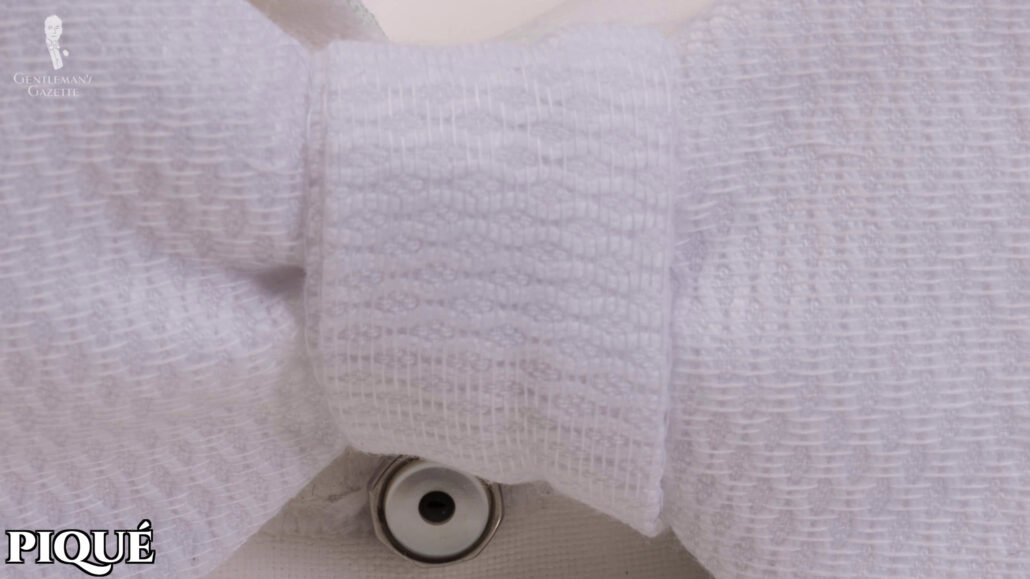
Yes, that’s right. You might be surprised to hear that cotton is the crème de la crème when it comes to evening bow ties, but not just any kind of cotton will do. When it comes to White Tie, specifically, you’ll want to look for finely-woven cotton in a specific weave called pique or also “marcella” in the UK.
Pique provides a unique, three-dimensional texture that will also add elegance to your outfit. White tie waistcoats and shirts or, at least, shirt fronts or bibs are also going to be made from pique. So, having your bow tie match these will provide a harmonious look.
This has been the standard for white tie since the 1930s, considered to be at the heart of the Golden Age of Menswear and, as frequent readers are likely to know, this is the era which we most appreciate in classic men’s style.
Bow Tie Styles
Turning to bow tie styles, then, let’s discuss the different shapes that are available. The shape that your finished bow will be tied into is predetermined somewhat by the way that the bow is cut and sewn.
As we’ve already seen, various styles at different ends of the spectrum have emerged throughout the history of the bow tie. For some specific examples of these extremes though, the 1950s saw a vogue for small and slim bow ties and the 1970s saw a vogue for extremely large and wide bow ties. These two ends of the spectrum are helpful to understand though because they provide us with a middle ground that most men should shoot for when looking for a bow tie to wear.
Essentially, the size of your bow should be proportional to your face. As if it’s too big, it’s going to look a bit clownish and, if it’s too small, you run the risk of looking a bit like Pee-wee Herman.
Furthermore, a bow tie right in the middle of the size spectrum is going to be most timeless, whereas exceptionally small or large bows are going to come in and out of fashion. That isn’t to say that you can’t experiment with these different kinds of styles, but a medium-sized bow tie is going to be your best bet in terms of longevity and proportionality.
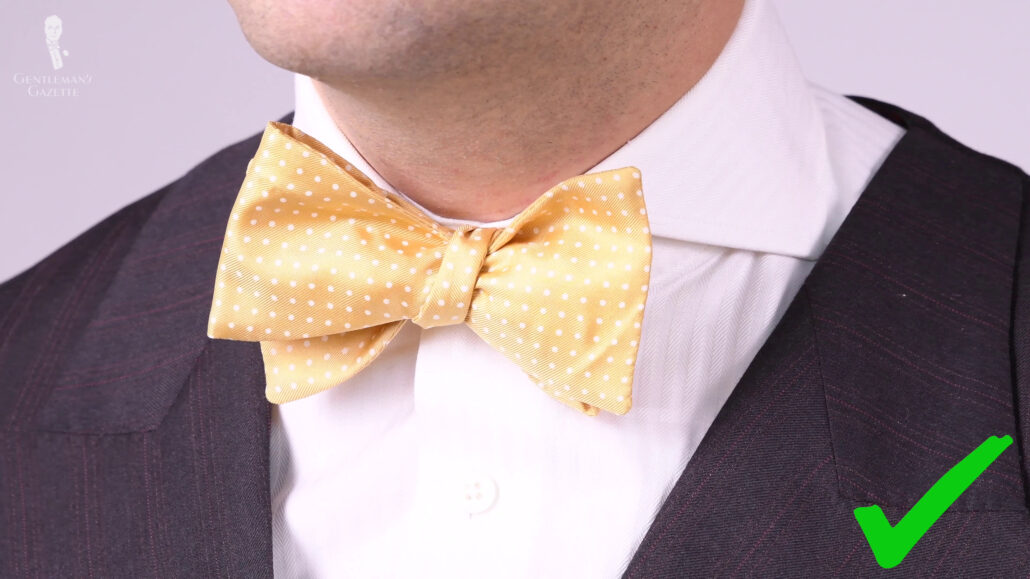
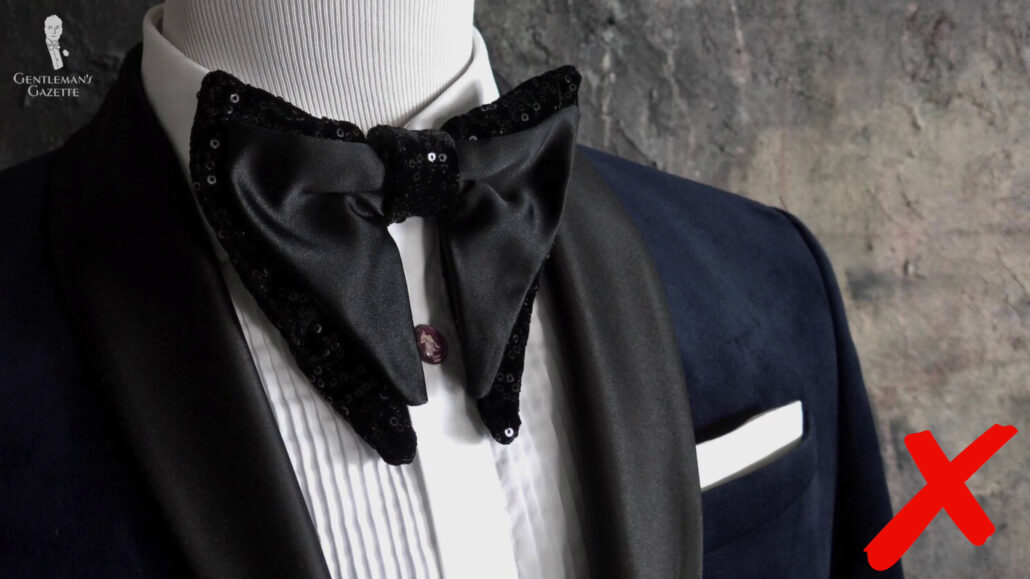
And while we’re discussing trends, the bow tie has seen a wide array of various shapes and sizes throughout its history, but you’re not going to see too many of these worn commonly today. Instead, most well-dressed men are going to stick to a small handful of styles, which we’ll profile here in detail.
1. The Butterfly
Up first is probably the most universally recognized bow tie style – the butterfly. The ends of this style are going to resemble a sideways hourglass when untied and, of course, a butterfly when fully tied. While it is a bit safe, this is the most traditional option and it’s going to be pretty much perfect regardless of the occasion to which you’re wearing it.
The butterfly is also a great choice for those who are new to tying a bow tie as it provides you with a handy visual guide to where the knot should be situated. Hopefully, then, you can end up with a neater-looking knot with a lot less fuss.
The butterfly bow does have a pleasing symmetry to it but, if it is a self-tied model, it will still have a bit of the human touch that provides that subtle elegance.
2. The Batwing
The batwing style is named for the more angular style seen when it’s fully tied and which also has fully rectangular ends when untied. Because the batwing bow doesn’t feature a shape that will help guide the wearer to a finished knot, it’s considered a slightly more advanced style. In fact, this is exactly the appeal of the batwing for those who choose to wear it, because they can tie it a bit differently each time and inject more personality into the knot.
As a fun fact, when we see Sean Connery’s James Bond for the very first time in 1962’s Dr. No, he’s wearing a batwing bow tie. But, if you look a bit more closely, you’ll see that there is an extra point to Bond’s bow tie that has pointed ends, which ties us nicely to the next style.
3. Diamond Point
The diamond end or diamond-point bow tie is really a sub-type as it isn’t mutually exclusive to any shape. Butterflies and batwings can both feature diamond ends quite happily. Perhaps, appropriately, this is also a design feature favored by Count Dracula.
What makes a diamond-end bow tie special then is that these ends highlight the asymmetry of the finished bow. If you were to just look at the outline of a finished diamond-end bow tie, it would look fairly even at first glance. But, if you look more closely, you can see how the diamond point sticks out past the folded end on one side and is mirrored in reverse on the other side.
For this additional rakish elegance, then, diamond-ended bow ties can be great additions to both your daywear and evening wear wardrobes.
4. Single Ended Bow Tie
Finally, we come to a very rare, almost extinct form of bow tie; today reserved exclusively for evening wear – the single-ended bow tie.
Most commonly seen in a butterfly style, this type of tie features a defined shape only at one end, while the other end is essentially just a long continuation of the neckband. This style was particularly popular in the 1910s and 20s when formal wear was more commonly worn than it is today and the emphasis was also on a clean, sleek look.
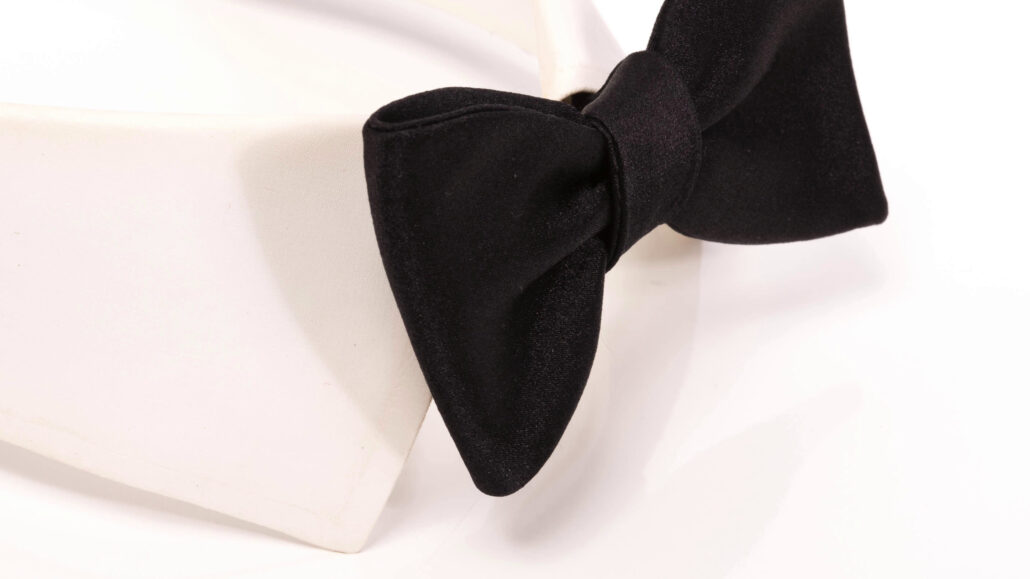
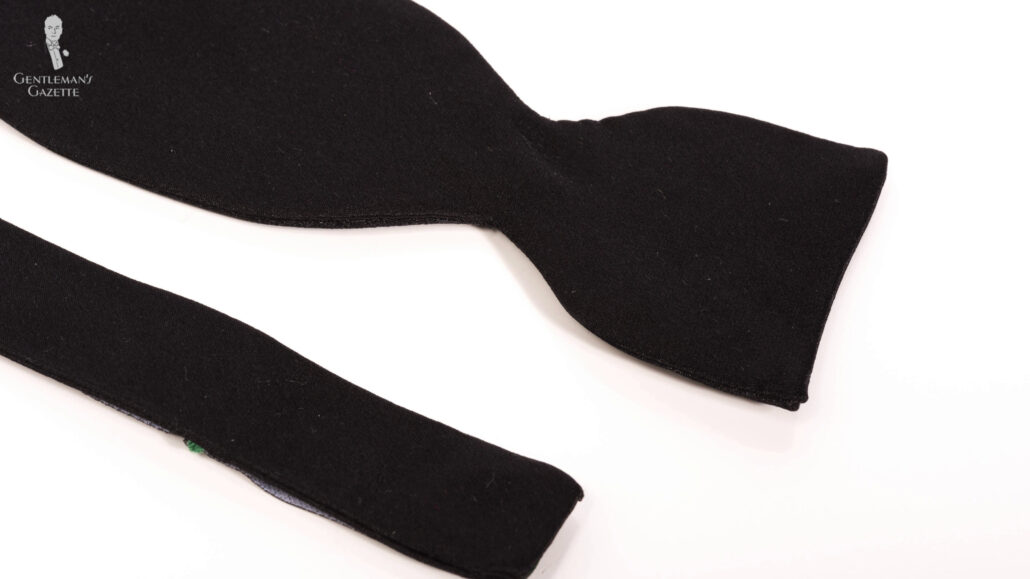
A single-ended bow tie allows for a particularly neat shape to be formed and, because of the reduced total number of layers of fabric, the tie will sit more closely to the shirt’s collar with an elegant, almost weightless look. Single-ended bow ties are exclusively within the realm of White Tie and Black Tie today and, while they were once difficult to find, they aren’t anymore as we’re proud to offer them in the Fort Belvedere shop.
And, on the subject of obscurities, we’ll also give the briefest of mentions today to the “floppy bow ties” of the mid-to-late-1940s, which featured little to no interlining to stiffen them up. But, as these fall more into the realm of historical fads, they’re probably best left for another day, so let us know if you’d like to have a separate guide about this sort of thing in the future.
![A Gentleman Wearing A Floppy Bow Tie A young Frank Sinatra wearing a "floppy" mid-1940s bow tie. [Image Courtesy Hoboken Historical Museum]](https://www.gentlemansgazette.com/wp-content/uploads/2022/03/A-gentleman-wearing-a-floppy-bow-tie-1030x579.jpg)
Conclusion
Hopefully, this definitive guide has given you a bit more insight into the history and intricacies of the bow tie. And, remember, if you need help tying one, if you’re looking for some alternative tying methods, or if you need a bit of extra confidence in wearing one well, we’ve got you covered on all fronts. With that said though, I think that puts a neat bow on things for today.
Outfit Rundown
Today, I am, of course, wearing a bow tie. It’s a Fort Belvedere model in wool challis in an orange color with green polka dots and, as you can see, it also has pointed ends. I’ve gone for an orange and blue color feel overall today.
So, along with the bow tie, I’m wearing a plain blue French-cuffed shirt and a navy blue blazer with gold buttons. Into the cuffs of the shirt, I’ve got some simple gold vintage cufflinks inserted that harmonize well with the blazers buttons.
My trousers are plain brown with a reddish undertone to go along with the oranges, and my shoes are chocolate brown, suede Oxfords that feature Fort Belvedere laces in a yellowish color.
My other accessories today are also from Fort Belvedere, and these include my shadow-striped socks in charcoal gray and orange, which, overall, contribute a brownish color feel, but also, of course, have the orange accents; my pocket square, which is a prototype design, but similar to other rabbit-motif, silk-wool pocket squares that we offer in the Fort Belvedere shop; and my orange exotic Caribbean boutonniere.
With the exception of this particular pocket square, you can find all of the Fort Belvedere accessories I’m wearing today, along with a wide array of other bow tie colors, patterns, styles, and fabrics in the Fort Belvedere shop.
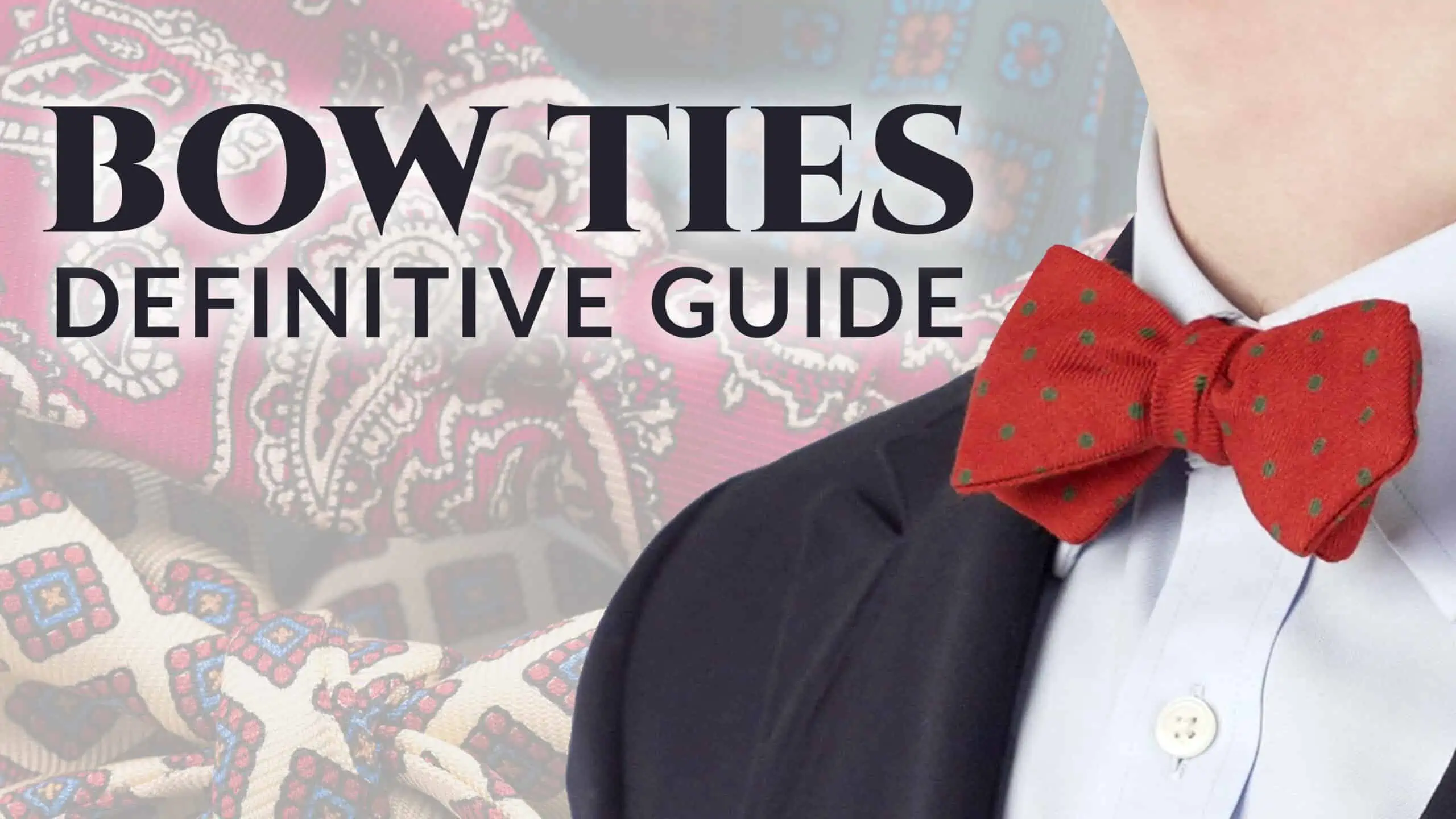
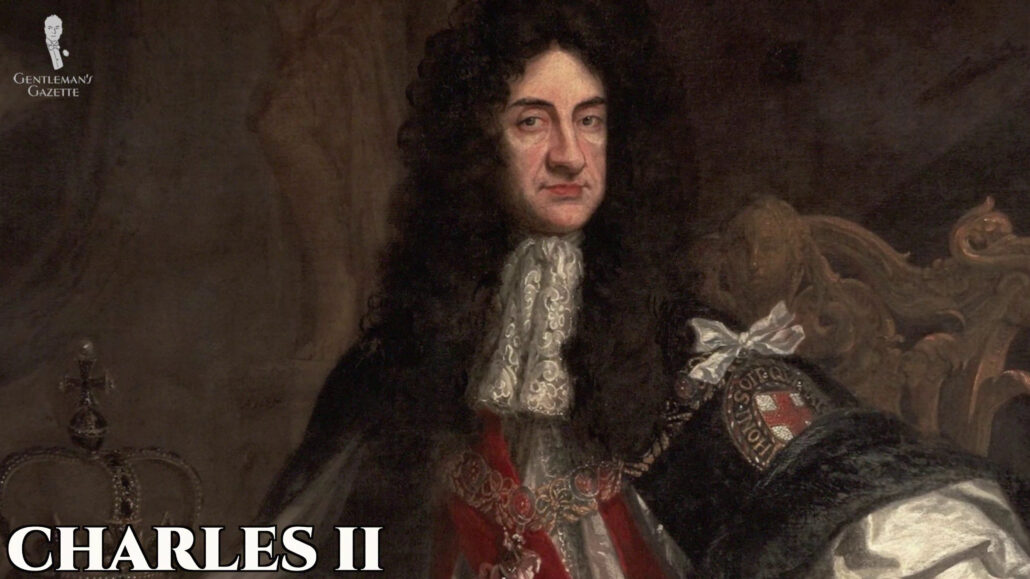
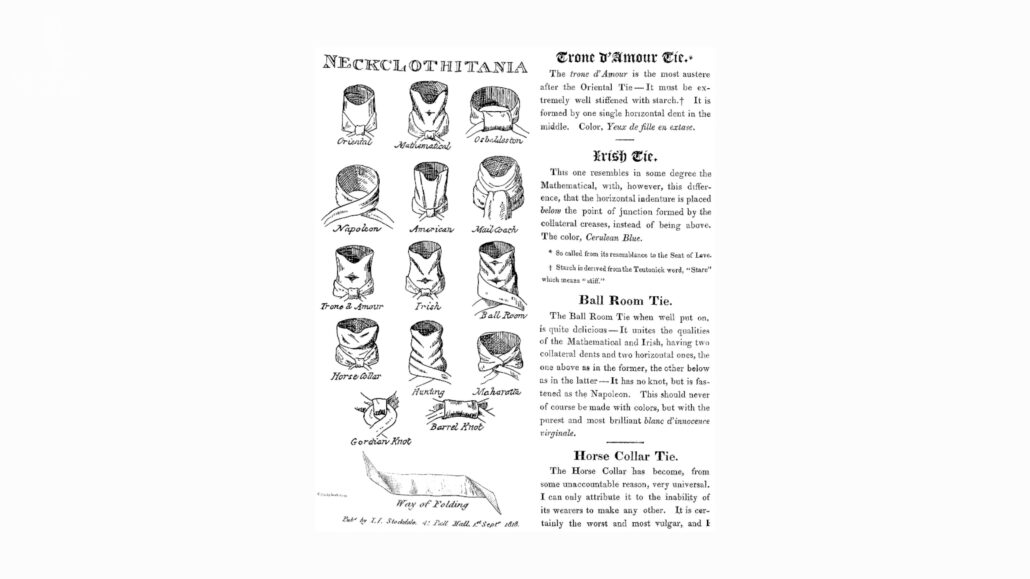
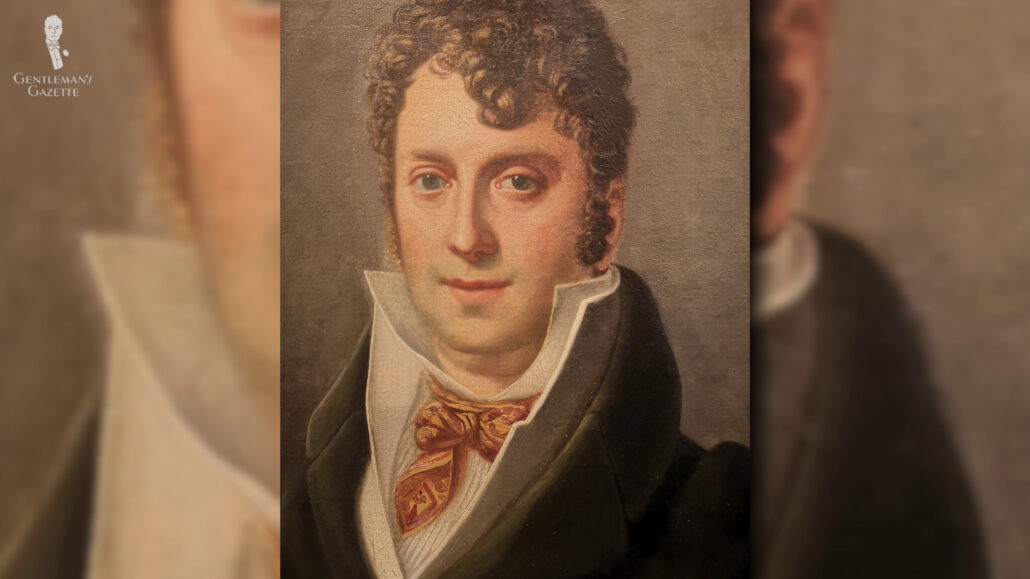
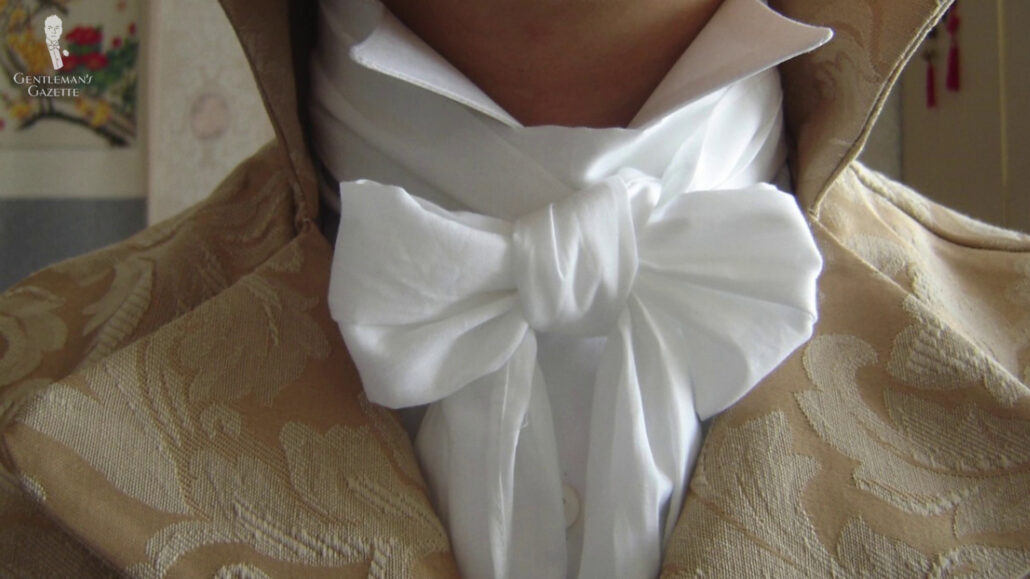
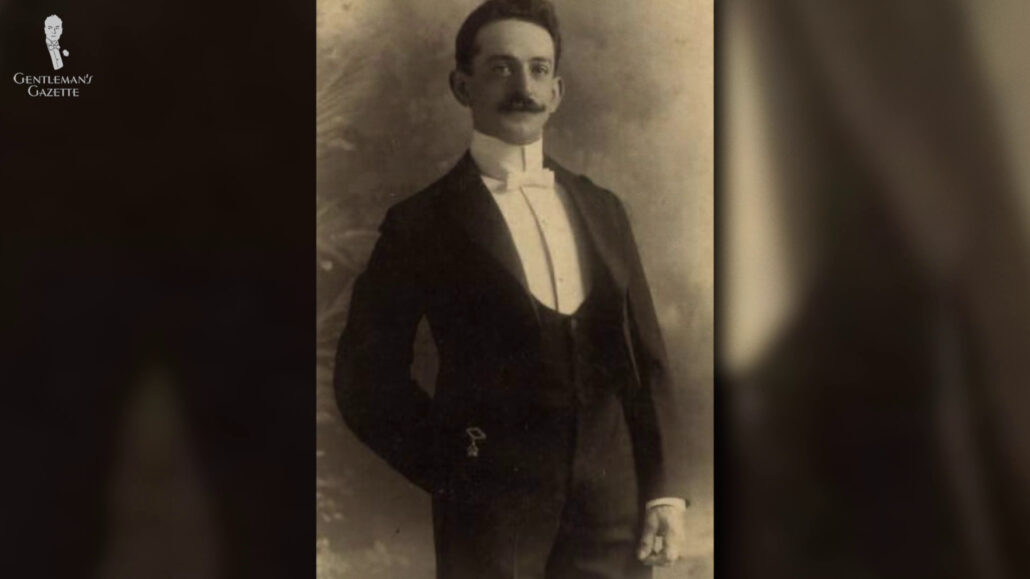
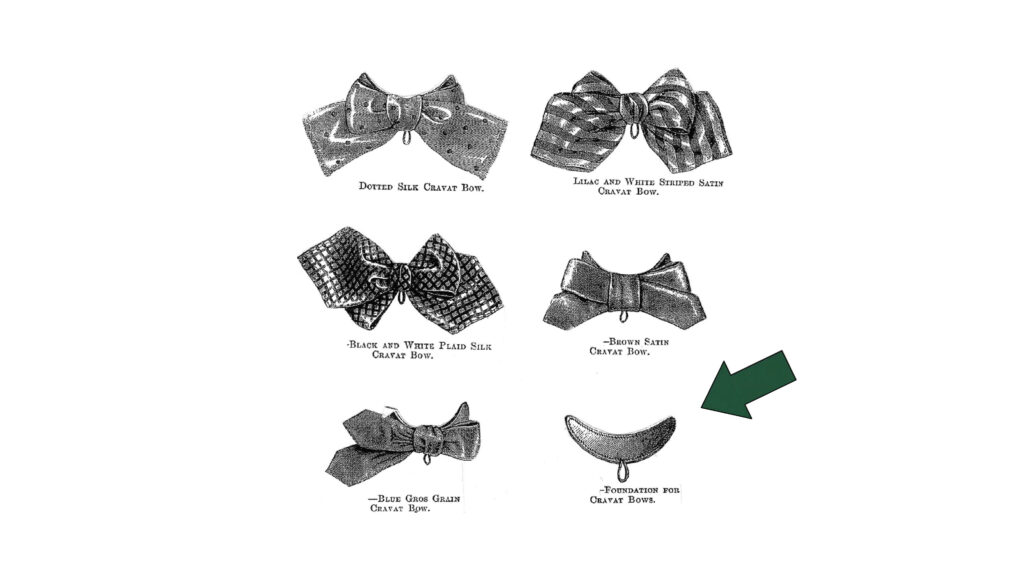
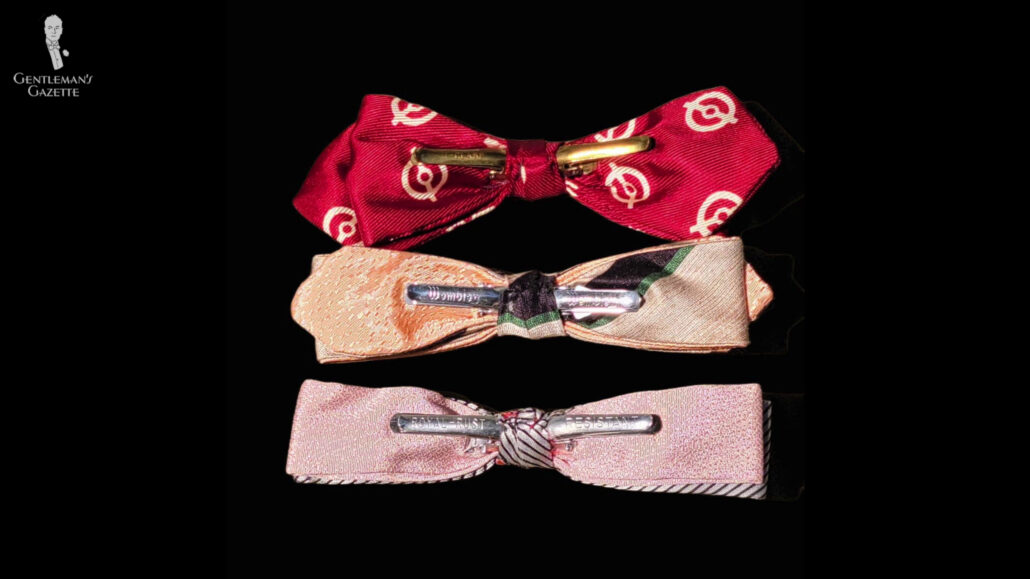
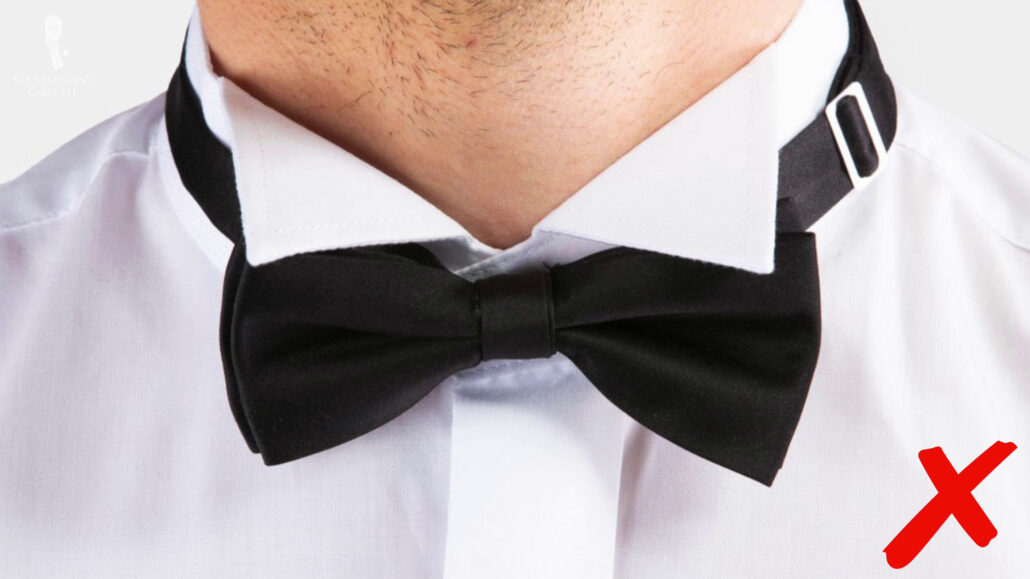
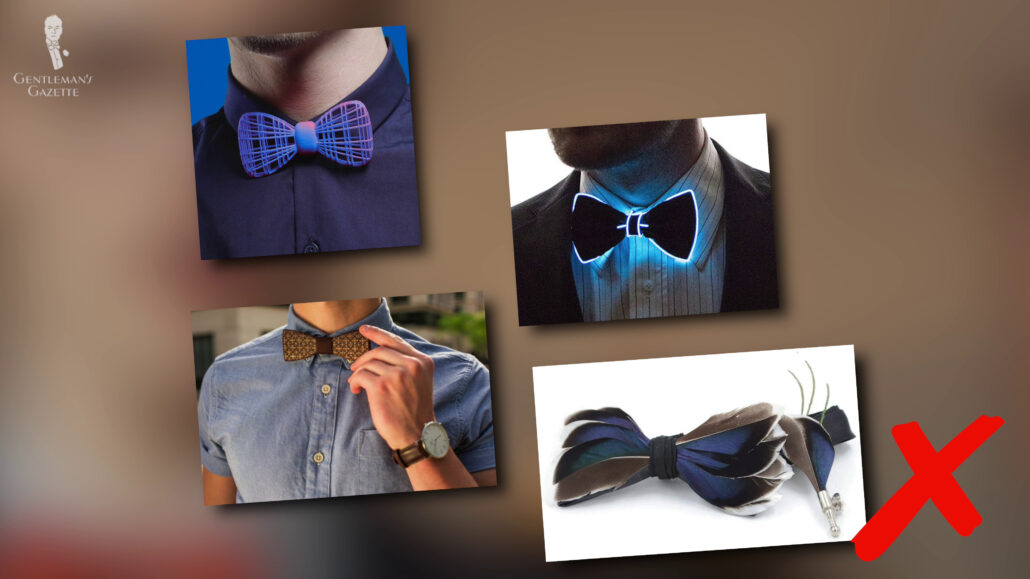
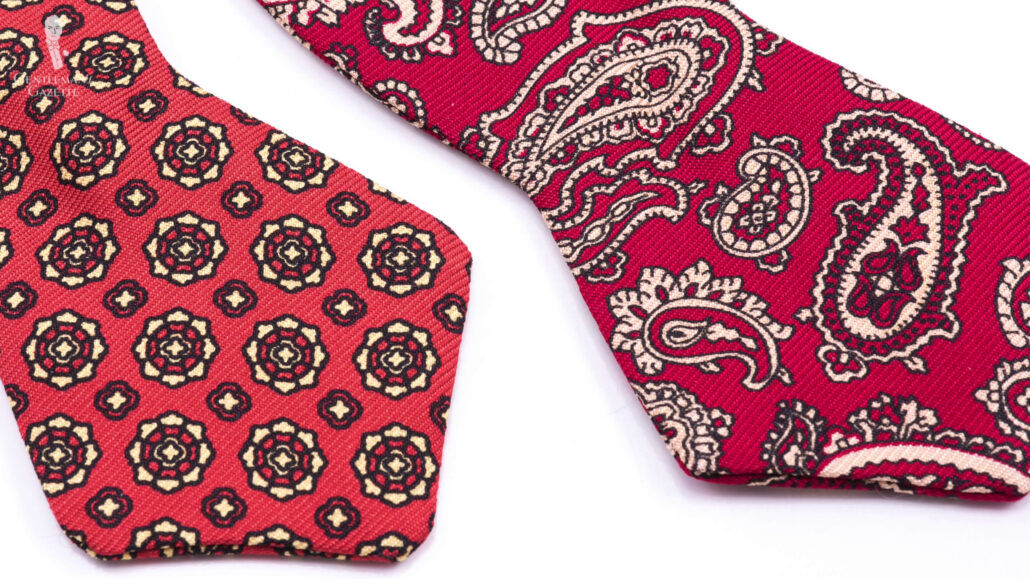
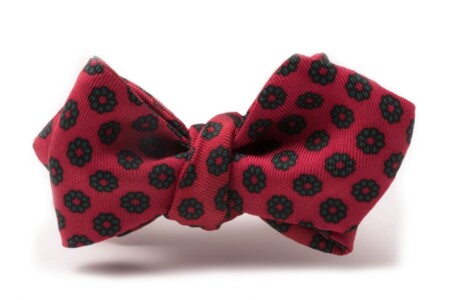
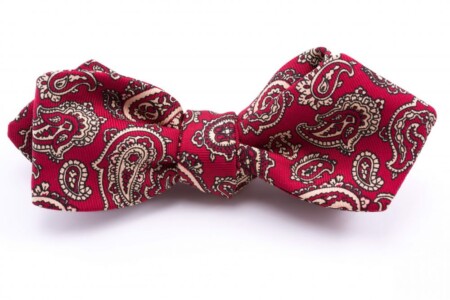
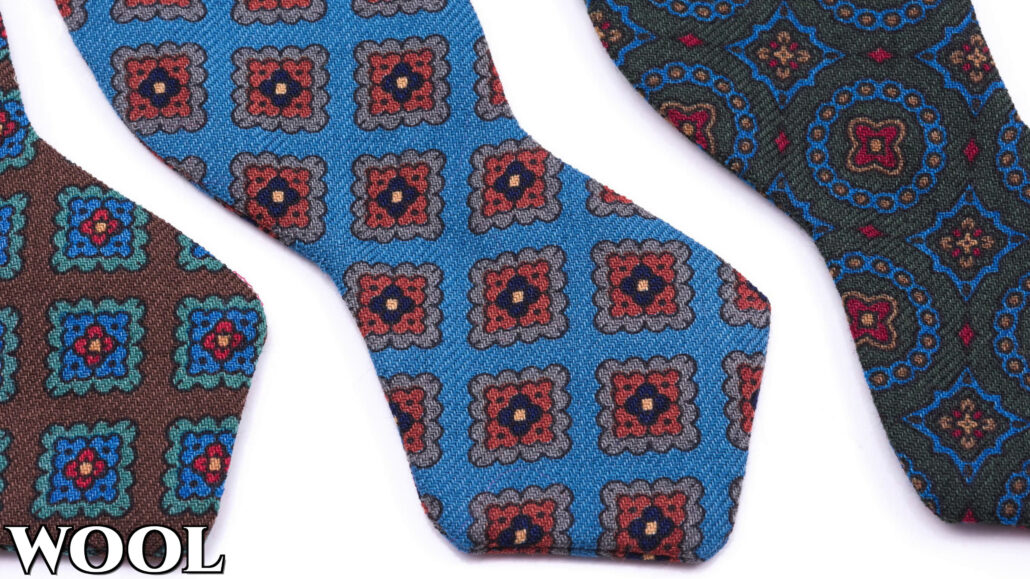
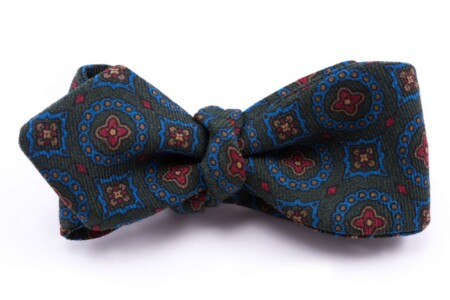
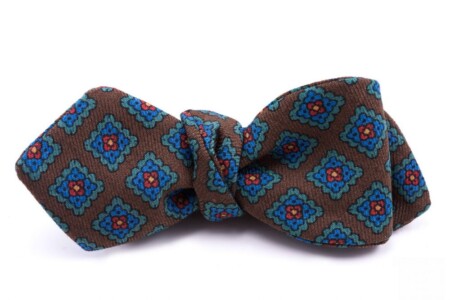
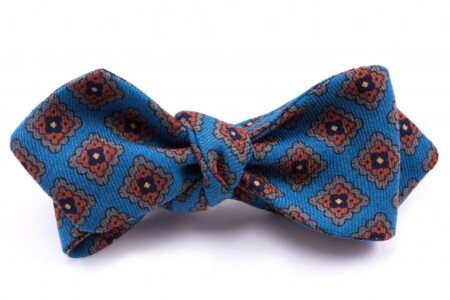
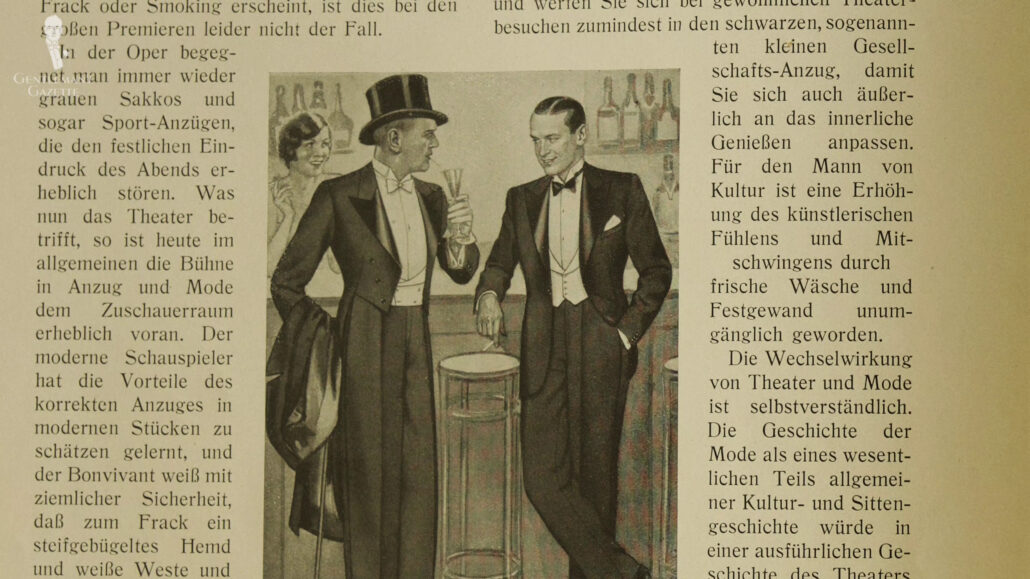
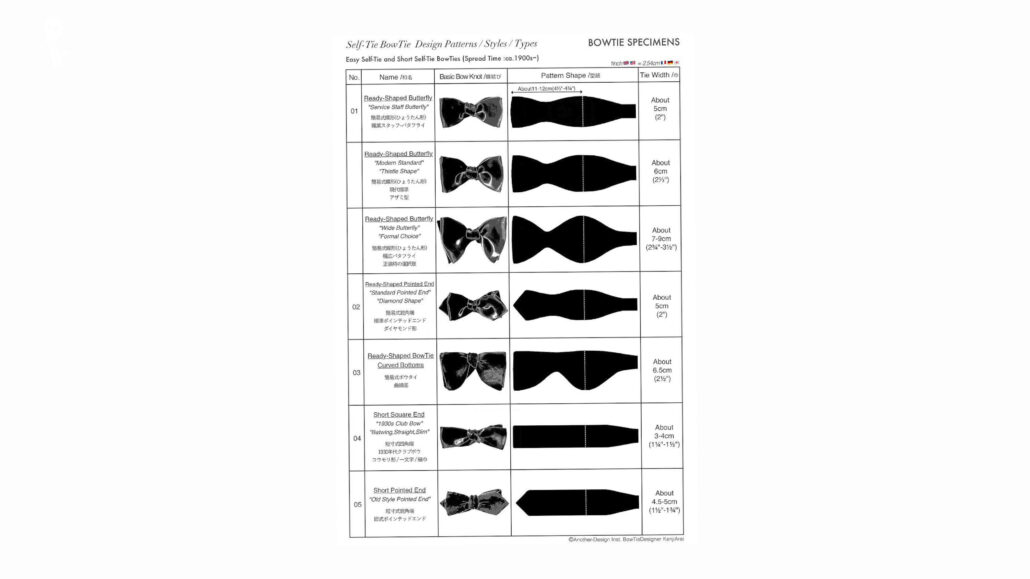
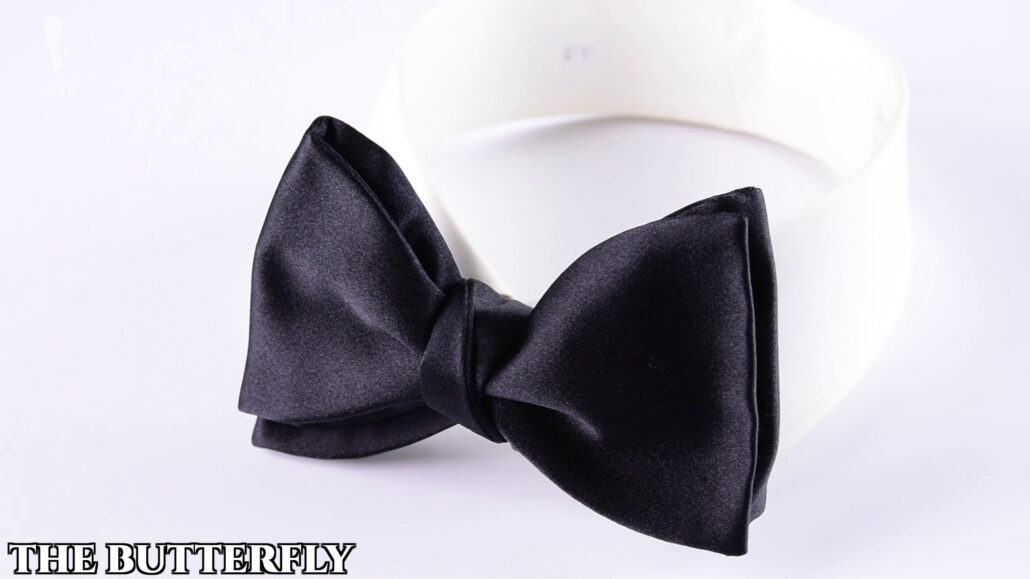
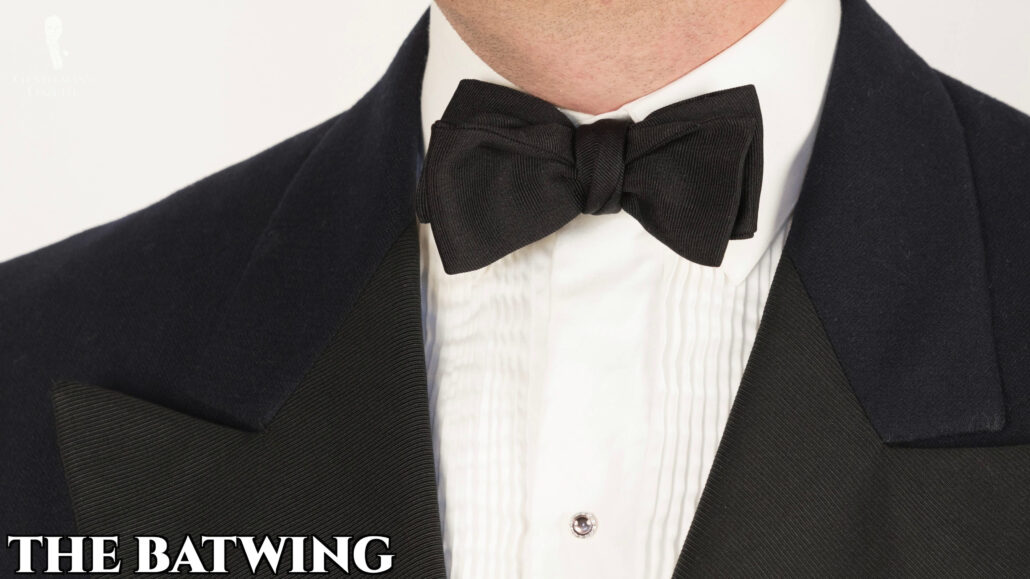
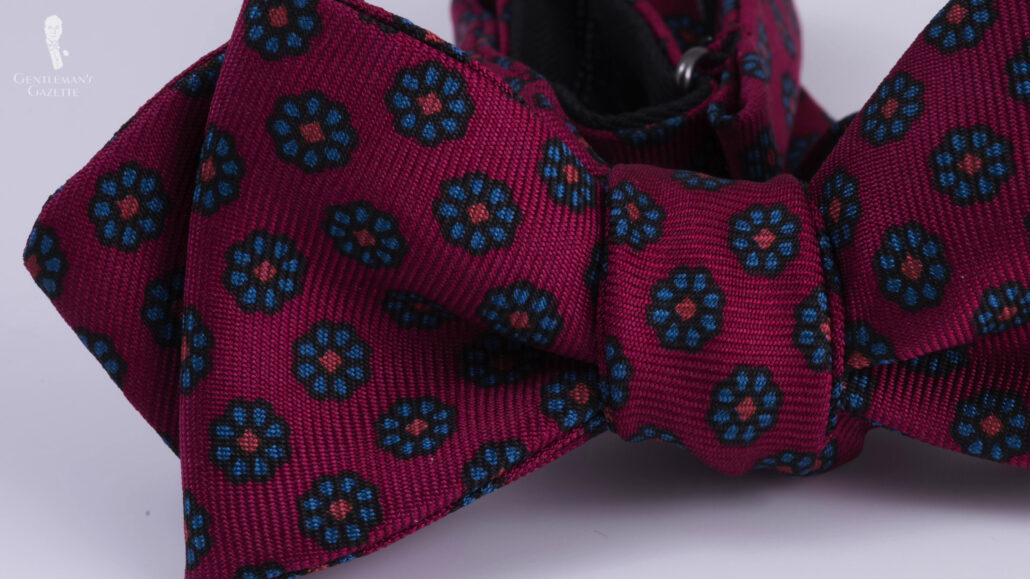
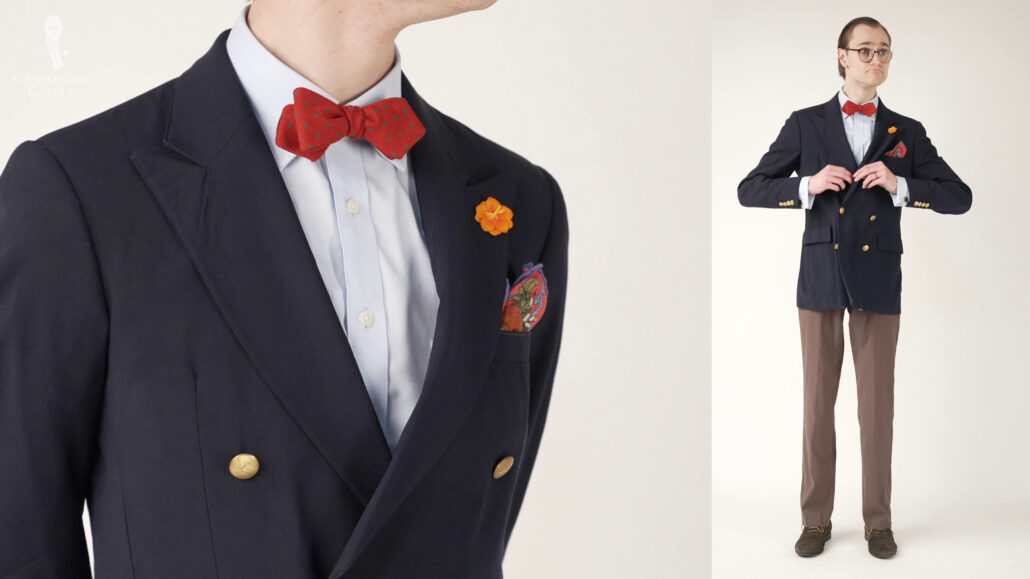
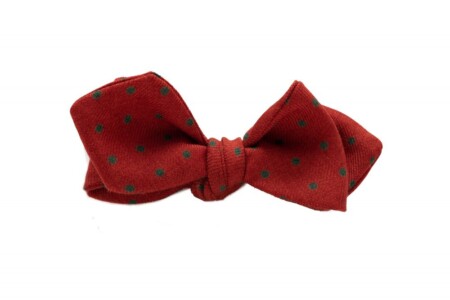
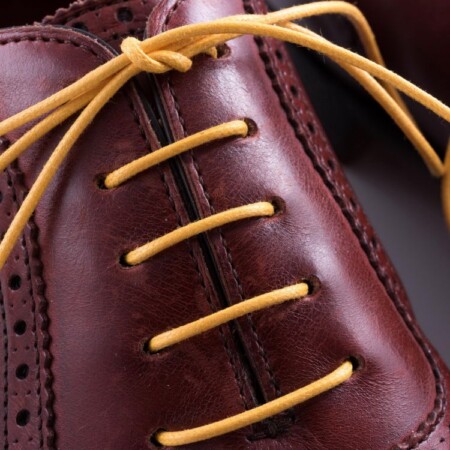
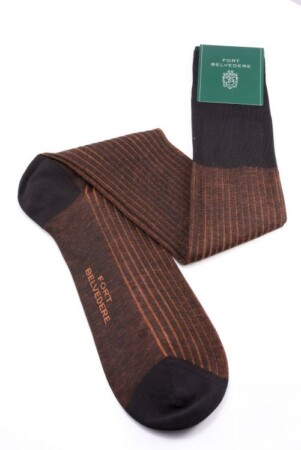
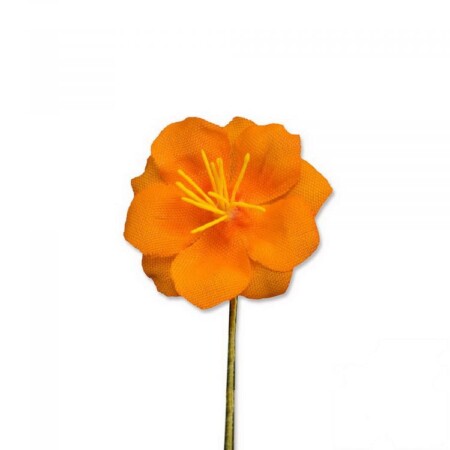
Bow ties keep them!! Unless you need one for a formal wear evening then by all means buy a real bow tie that you have to tie and learn how to tie it correctly other wise wear a regular tie!! To me wearing a bow tie leaves everything under the bow look out of place again unless it is a formal then you get to see the shirt studs
Unlike America, in Great Britain the evening wear etiquette state’s that white tuxedos should only be worn within the tropic of Cancer which is 23 deg .26 North and 23 deg .26 south. So the fact tha it is formal evening wear rather restricts the colour of the bow tie one can wear.
Regards. John Search.
I have a handful of bow ties, and I love wearing them. My main issue with bow ties is (for me, anyway) you need to wear a waistcoat or sweater with them because they leave too much “open space” on the shirt if you remove your suit coat. So, usually reserve mine for casual Fridays. I hope they become more of a menswear staple, though.